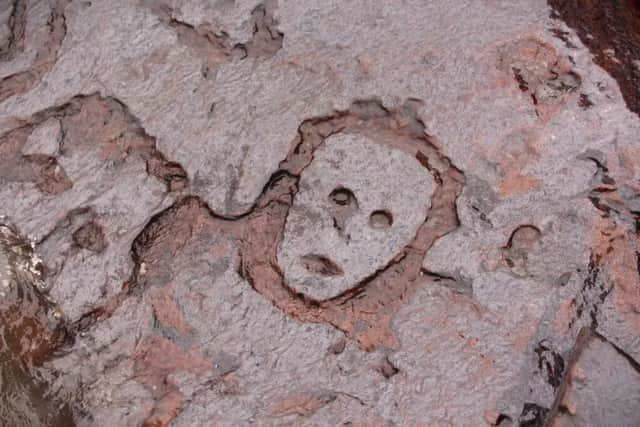Brazil: historic drought reveals human faces engraved in Amazonian riverbanks
and live on Freeview channel 276
The historic drought in Brazil has revealed human faces and other figures etched in stone on Amazon riverbanks which date back to almost 2,000 years ago, after the region saw water levels reach unprecedented - in recent times - lows.
The rock carvings - or petroglyphs - include animals and other natural forms on the shores of the Rio Negro, which is an archaeological site known as the Ponto das Lajes, or Place of Slabs.
Advertisement
Hide AdAdvertisement
Hide AdThey had previously been sighted in 2010, during a severe drought, when water levels in the river dropped to 13.63 metres, and re-emerged after water levels dropped below 13 metres - to 12.86 meters.


Researchers estimate the markings to be around 1,000 and 2,000 years old after they appeared due to an unusually dry season attributed to El Niño weather pattern and warming in the North Atlantic linked to the climate crisis.
Carlos Augusto da Silva of the Federal University of Amazonas identified 25 groups of carvings on a single rock which he believes was used as a whetstone to sharpen various instruments. “This was an area for the preparation of tools,” the archaeologist told the local news site Amazônia Real.
He added: "These locations, today archeological sites with black soil, large quantities of ceramics fragments, and rock carvings, tell the region’s ancient Indigenous history and must be treated with respect by all of us who live in Manaus today".
Advertisement
Hide AdAdvertisement
Hide AdFragments of ceramics found are thought to be thousands of years old, and may have belonged to large Indigenous villages in pre-Columbian times. There are some rock grooves which also suggest the site was also used to produce stone tools.
However, Amazonia Real have also reported that due to tourism the site is under threat of depredation and vandalism by visitors to the place.
Environmentalist Valter Calheiros, who photographed the first occurrences of rock engravings at the Lajes site during the drought of 2010 and this year, said pieces of ceramic were seen in the ravine. He told the site: “As the ravine is falling, this material (ceramics) comes down from the terra preta and spreads on the beach”, he said, highlighting: “An emergency technical assessment by Iphan on site is necessary to decide on the rescue of the ceramic material which is in the area where the ravine is falling”.
Comment Guidelines
National World encourages reader discussion on our stories. User feedback, insights and back-and-forth exchanges add a rich layer of context to reporting. Please review our Community Guidelines before commenting.
